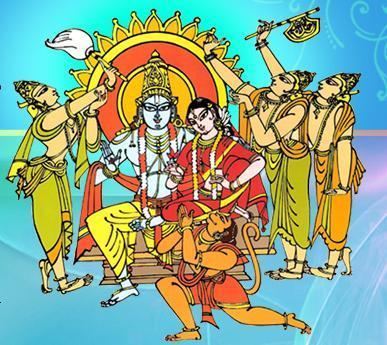 | ||
Tawct ugadi 2016 14 ranganatha ramayanam part 2
Sri Ranganatha Ramayanam (శ్రీ రంగనాథ రామాయణం) is one of the most famous adaptions of the Valmiki Ramayana in Telugu, a Dravidian language spoken by the people of Andhra Pradesh and Telangana. Telugu has a very rich literary tradition, starting in the 11th century A.D. Although there are more than forty adaptions of the Valmiki Ramayana which are partly or completely in Telugu, only four adaptions have covered the entire theme of the original epic. They are Ranganatha Ramayana, Bhaskar Ramayana, Molla Ramayana, and Ramayana Kalpavriksham.
Contents
Ranganatha Ramayana was written by the poet Ranganatha—also known as Gona Budda Reddy—between 1300 and 1310 A.D. This Ramayana was composed in 17,290 couplets (in Dwipada metre). This meter is lyrical and can either be recited like the Valmiki Ramayana (written in Anustupa metre) or sung like the Ramcharitmanas (written in Doha-Chaupai). It is quite popular with both scholars and illiterates.
Structure
Although Ranganatha follows the theme of the Valmiki Ramayana, he still made changes in some incidents which effects the course of events. The theme of the Ranganatha Ramayana has been classified under seven cantos.
Blessing of Squirrel
Ranganatha added some significant incidents to make the theme more natural and reliable. For example, when the bridge was built, a squirrel thinks that it should help Rama to achieve his end; it rolls down in the sand and gets rid of the sand on the bridge under construction. Knowing this, Rama blesses squirrel for its devotion and draws three lines on its back with his fingers. The three white lines on the back of squirrels are supposed to have come into existence in this way.
